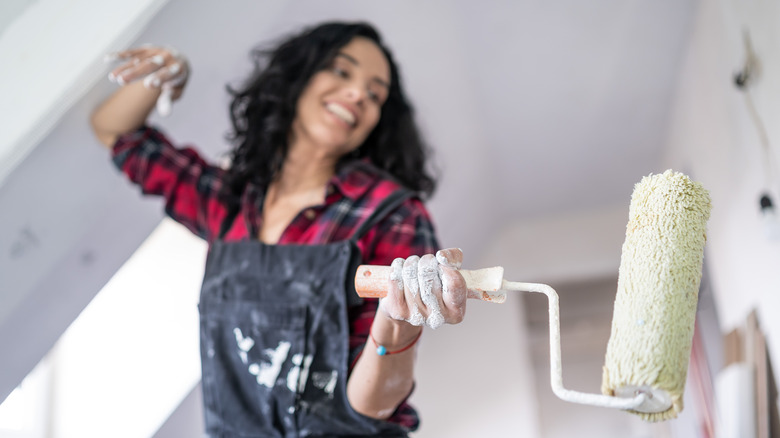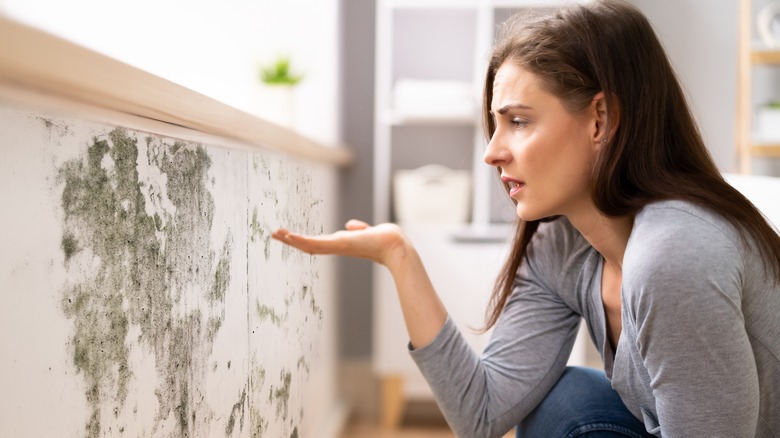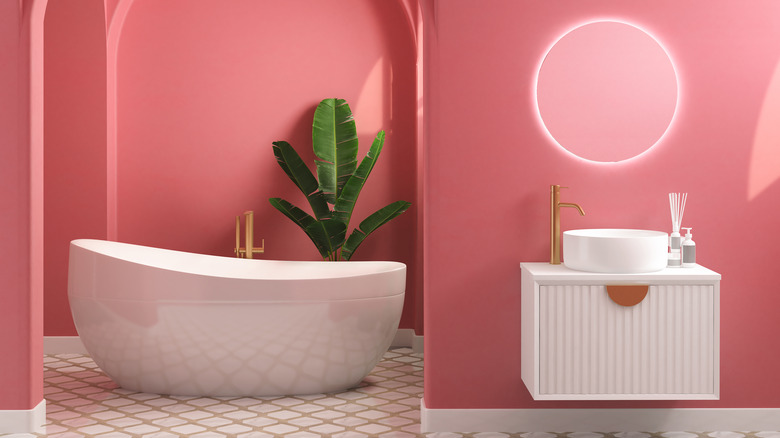What Is Antimicrobial Paint And Should You Be Using It In Your Home?
Ever since the pandemic, people have been looking for new and innovative ways to prevent the spread of disease, both on their person and in their homes. Many think that by using more antibacterial and disinfectant products, they'll create a space less likely to see the spread of germs. One of the biggest trends in this area is antimicrobial products, specifically designed to resist bacteria and viruses. You can buy antimicrobial linens, antimicrobial cutlery, and even antimicrobial staplers. The antimicrobial trend has even made its way into paints, seemingly allowing you to protect your very walls from carrying disease. But what does antimicrobial really mean? What do antimicrobial paints do, and are they worth purchasing?
Antimicrobial paints, like other antimicrobial products, are treated with chemicals that prevent microorganisms from being able to adhere to or grow on the product. They may kill the microorganisms altogether or merely drastically reduce their reproduction rates. Either way, the result is ultimately the same: harmful bacterial infections and viruses don't hang around the surfaces of your home, spreading from one person to the next. Of course, not every product needs to carry an antimicrobial label — and not every antimicrobial product is worth the cost. But in the case of paints, the addition of antimicrobial chemicals does indeed prevent the growth of various microorganisms on its surface.
The benefits of antimicrobial paint
Antimicrobial paints are effective at preventing bacteria and viruses from adhering to their surfaces, so it's entirely possible that using them throughout your home will decrease the likelihood of spreading colds or flu viruses between members of the household. But where they're actually most effective is in the prevention of mold and mildew.
Mold is a fungus that grows in moist areas, and mildew is a general term that refers to a specific type of mold. They not only look and smell gross, but they can actually be bad for your health. Mold and mold spores create allergens, and can therefore cause a range of allergic reactions in people who have mold sensitivities. In addition, as mold breaks down it gets into the air and, if inhaled, can cause respiratory distress. For people with asthma or other respiratory conditions, this can be dangerous. And of course, anyone with a compromised immune system is susceptible to problems caused by mold. As a method of preventing mold from growing on your walls, antimicrobial paints provide a definite health benefit.
Where to use antimicrobial paints
Because mold and mildew generally grow and spread in areas that see a lot of moisture (and antimicrobial paints are particularly effective at preventing growth), the best places to use antimicrobial paints are in the kitchen and bathrooms. These are the areas of your home that are exposed to the most moisture, and you're most prone to find mold growing there. Redecorating there with a new paint color in an antimicrobial finish is a great way to brighten up your room and reduce your family's exposure to harmful particles in the air.
Of course, you can treat any room in your house to an antimicrobial paint refresh, but chances are it won't actually do much in areas like your living room or bedrooms. This is mostly because the walls of your home don't tend to be touched by multiple people, allowing the transfer of those harmful microorganisms. It's only in the kitchen and bathrooms — where the humidity can reach such levels that the walls themselves retain moisture — that the mold spores in the environment are most likely to find purchase. And since the mold particles become airborne, there's a much higher probability of someone being affected by what's on the walls. However, if it provides you greater peace of mind to paint your walls with an antimicrobial product in every room, then it might be worth it for that reason alone.


